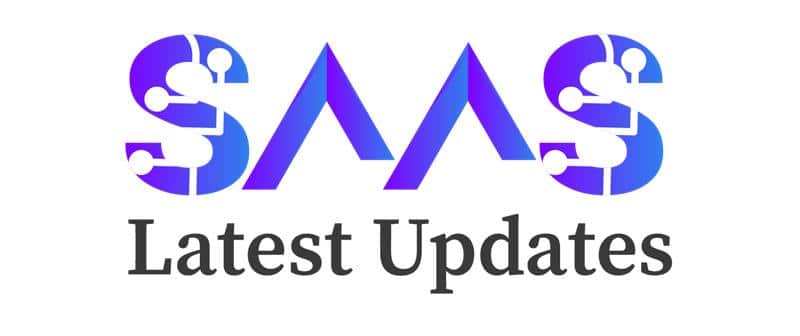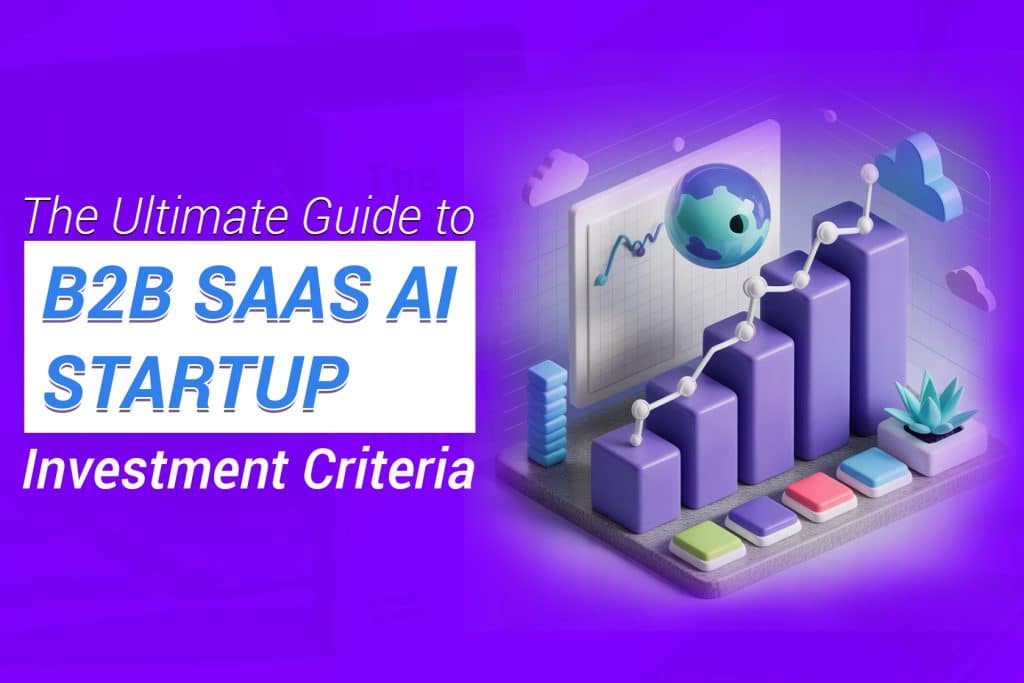With the rapidly increasing wave of digital transformation, investors and venture capitalists are focusing on SaaS AI startups. The demand for intelligent solutions is increasing. It makes understanding the investment criteria of these startups important.
Are you thinking of investing in a SaaS AI startup? This blog outlines why these startups are ideal investment opportunities. It also explores factors that investors should consider before investing in any AI SaaS investment.
30-Second Summary
This blog highlights the important aspects of B2B SaaS AI startup investment criteria. As an investor, this extensive guide will help you with crucial insights.
Discover the metrics, the role of the founder and team, due diligence and financial benchmarks. The checklist has all the essentials that you should evaluate before investing.
What is a B2B SaaS AI Startup?
A B2B SaaS AI startup is a company that sells AI-powered software to other businesses on a monthly or yearly subscription. These startups combine the power of SaaS with AI to solve business problems. This combination creates a data moat that gets improved over time.
What Makes B2B SaaS AI Startups Unique?
The key characteristics that set a SaaS AI startup apart from others are:
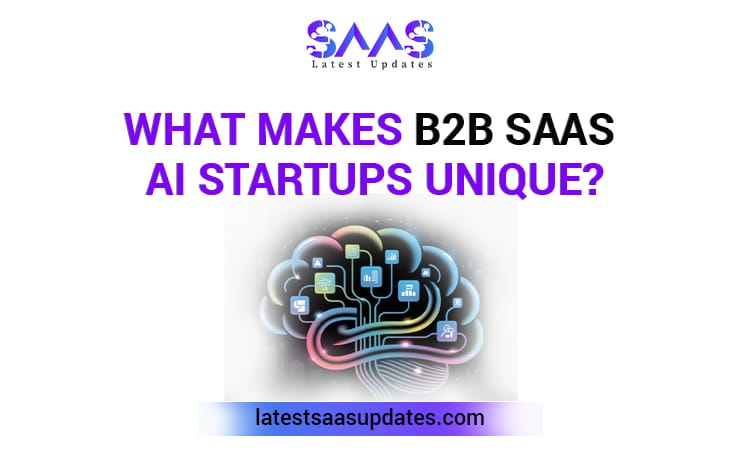
- AI is the backbone of the solution the company is offering.
- SaaS provides recurring revenue while AI creates a data moat that becomes valuable over time.
- It provides a longer sales cycle.
- AI adds real business value, significantly increasing retention rates.
According to the Economictimes, the B2B SaaS AI market will grow to $55 billion by 2027. This figure has attracted a large number of investors.
B2B AI SaaS Investor Checklist
Below is a comprehensive checklist for an investor looking to invest in a B2B AI SaaS startup.
| Market Potential | Targets a large and fast-growing domainSolves real problemsStrong timing and clear differentiation |
| Product and Technology | Strong product-market fitEffective use of AIScalable and secure |
| Team Strength | Experienced founding teamA combination of technical and business skillsClear vision and ability to adapt |
| Financial Health | Healthy MoM revenue growthControlled burn rate12 to 18 months of runway |
| Ethics and Compliance | Data privacyEthical use of AIRisk Management Control |
Core B2B SaaS AI Startup Investment Criteria
Below are all the factors every investor considers before investing in a SaaS AI startup.
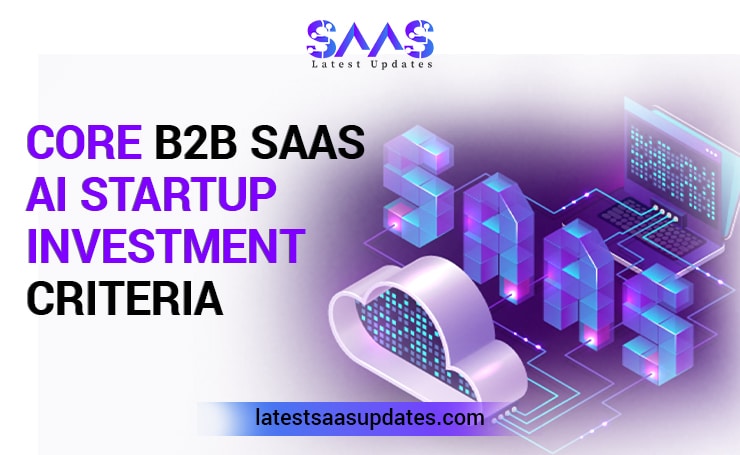
Market Potential and Industry Fit
Investors evaluate whether the startup is building for a large market. They also assess the business model to see if it is sustainable and scalable.
Market Growth
A B2B SaaS AI startup should be able to grow in a market worth $10 billion, which is growing quickly.
It matters because larger markets that have the potential to grow provide more opportunities to scale, follow-on funding and attract talent. For instance, AI in cybersecurity grew by 40%.
Additionally, around 71% of SaaS startups target niche markets. It gives them faster traction and demands hyper-specialization.
Problem-Solution Fit
The AI model a startup is introducing should be able to solve a pain point. Investors need clear evidence that customers are using this product to solve their issues. High customer retention is a strong indicator that the AI solution is doing exactly what it was marketed to do.
Industry Trends and Timing
As an investor, you should go for businesses that are already catering to rising demand curves. For instance, chatbot-based SaaS platforms grew $3.2 billion in market value. The reason is that more and more enterprises want to automate their tasks.
If you want to invest in a successful business, identify emerging needs early on. Trends like AI copilots and generative automation are becoming more popular in the market.
Competitive Landscape
Every market has competition. However, as an investor, you should see who the dominant players are. Look for any unmet gaps in which startups are thriving.
If a startup is ready to plunge into a market filled with competitors, it should differentiate itself on the basis of product, speed or niche. A startup that has specialized tech or AI models has a competitive edge over the generalist platforms.
If you want to invest, look for the startups that have either created new categories or dominated a neglected niche.
Product and Technology
The innovative products and technology of a startup should offer unique propositions by leveraging advanced AI. Investors should look for businesses that can become leaders in their respective industries.
Product-Market Fit
No matter how advanced your product is in terms of technology, it should solve a real-world problem. Investors should focus on customer behavior. Assess if customers are only purchasing the product or if they are returning to it and recommending it as well.
Some signs of a successful product-market fit are:
- People recommending it, driving organic word-of-mouth growth
- Low churn rate
- Customers use it daily or weekly.
You should ask for real data about retention and customer feedback before investing.
Technology Differentiation
In the realm of AI SaaS, technology is considered both an asset and a moat. You should ensure that the startup you want to invest in has the following:
- Ownership and exclusive rights to data
- Proprietary algorithms and models
- Compliant, secure and scalable architecture
Startups can create value by fine-tuning models such as GPT-4 for different tasks, such as contracts and medical summaries. Owning datasets for training creates more value.
You can ask the startup about their “data moat.” It shows what sets their business apart in the market.
Roadmap and Future Development
The startup should have a clear and achievable roadmap apart from the Minimum Viable Product (MVP). You need to make sure that the future features are driven by customer feedback.
The team of the startup should be shipping regularly. See if they are scaling the infrastructure and adding integrations. You should invest in agile startups that quickly launch new features weekly. These startups outperform others in the market.
Team and Founders
Another vital part of B2B SaaS AI startup investment criteria is the team and founder. As an investor, you should prioritize strong technical expertise and the business strategy of the startup.
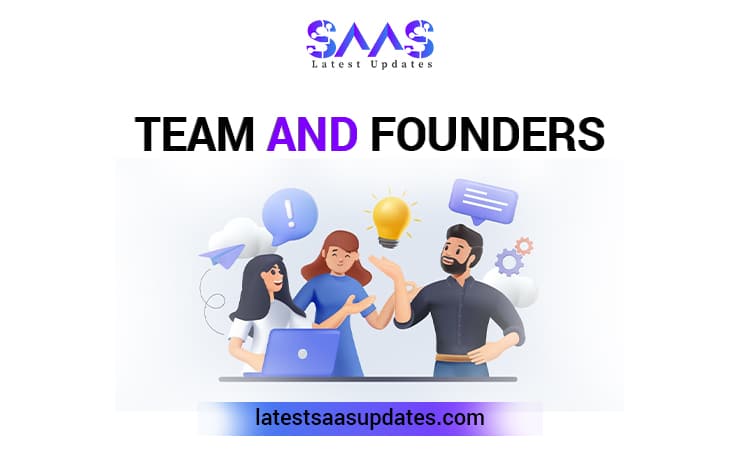
Founder-Investor Fit AI Startup
A strong founder-investment fit is based on a strong understanding of the AI space and clear business goals.
Founders and their expertise matter a lot. Founders who have already built something in the SaaS or AI industry have the potential to run the best AI SaaS startups.
A red flag you should look out for is a founder without in-depth knowledge of the domain. In contrast, a major green flag is that the team has scaled a product or worked in a high-stakes AI environment.
Technical and Business Skills
The ideal team is proficient in both technical depth and business savvy. Invest if you see:
- A strong CTO
- A CEO who understands sales and GTM
- A balance of product engineering and marketing skills
Be on the lookout for teams that have technical and customer-focused leaders, as they tend to grow faster without making scaling mistakes.
Leadership and Vision
When evaluating B2B SaaS AI startup investment criteria, you should see if the leadership is strong and has a vision for the business.
Key aspects include the founder’s experience, strategic direction and ability to execute these strategies.
The leadership should focus on integrating advanced AI features and growing in a large and addressable market.
Financials and Metrics
When you are thinking of investing in a startup, you are not betting on an abstract idea. You are betting on a business that can help you grow more in the industry.
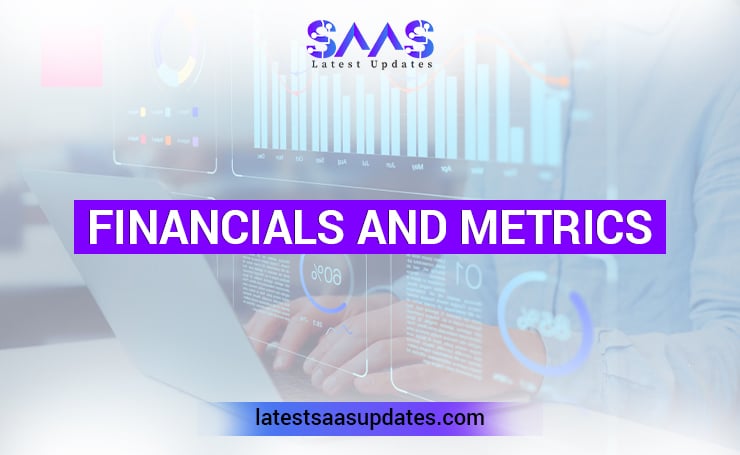
This is why it is important to invest in a financially secure startup.
Revenue and Customer Growth
See if the startup gets consistent revenue every month. This MoM growth is necessary in the early stages as well. A 15 to 30% increase in revenue is a strong indicator that the startup is growing ideally.
For example, a startup that reaches $1M ARR (annual recurring revenue) within 12 to 18 months shows a strong PFM and GTM.
CAC, LTV, and Unit Economics
The economics of SaaS are important for the sustainability of a startup. You need to track the following metrics:
CAC (Customer Acquisition Cost): It refers to how much it costs to get one customer.
LTV (Lifetime Value): It refers to the revenue a customer will bring to the business in their life span.
The CAC LTV ratio SaaS compares what a customer is worth and how much it costs to get them. As an investor, the ideal ratio is that LTV should be at least 3x the CAC.
If the data of a startup shows a 3:1 ratio, it is a healthy benchmark.
Burn Rate and Runway
Both burn rate and runway are important aspects of B2B SaaS AI startup investment criteria. Many startups operate at a loss in the beginning. However, an efficient burn rate is necessary to operate the business properly. If the burn rate is high, the business can face a runway.
The ideal runway time is 12 to 18 months after funding. If you encounter a business that has an unsustainable headcount or marketing budget with no traction, it is a red flag.
Go for startups where teams tightly manage the expenses while spending on high-quality products and services.
Rule of 40 in SaaS Startups
It is a financial metric in B2B SaaS AI startup investment criteria. It indicates the position and performance of a SaaS startup in the competitive market. The rule is that the sum of the company’s revenue growth and profit margin should be 40% or more.
This rule allows companies to find the balance between rapid revenue growth and long-term financial stability and profitability.
MRR and Churn Benchmarks
Two important financial health indicators in the B2B SaaS AI startup investment criteria are MRR and Churn Rate. Having healthy MRR and churn benchmarks in B2B SaaS startups is essential for a profitable investment.
MRR Benchmark
You can measure MRR (Monthly Recurring Revenue) using an easy formula: Number of average customers × Average monthly subscription fee.
Although MRR depends on the business model and stage of the business, there are some healthy benchmarks.
| Stage | Healthy MRR Benchmark |
| Pre-seed | $0 to $10k |
| Seed | $10 to $50k |
| Series A | $100k |
| Series B | $500k |
If a startup is earning 15 to 30% growth in MRR in the early years, it shows that it is doing exceptionally well. This consistency in growth represents effective customer service and strong product-market fit.
If you see flat or low MRR, it indicates poor pricing, high churn rate and poor customer retention strategies.
Churn Benchmarks
An investor should always look for startups with low churn rates. A low churn rate indicates that customers are happy and return to the product.
The formula to calculate the churn rate is: (Customers lost during a month ÷ Total customers at the start of the month) × 100.
Look out for two types of churn:
Customer Churn: percentage of customers lost
Revenue Churn: percentage of recurring revenue lost
The ideal churn rate for different businesses is:
| Business Type | Good monthly churn benchmark |
| SMB-focused SaaS | < 5% |
| Mid-sized market SaaS | < 3% |
| Enterprise SaaS | < 1% |
Due Diligence for AI Ventures
B2B SaaS AI startup investment criteria involve due diligence, which is an important aspect. Investors assess the business model, financial and legal standing, and market potential of SaaS startups.
This rigorous scrutiny provides transparent data from the founder of the startup. Some key areas that you should consider as an investor are:
Technical Due Diligence
Evaluate the technology stack, scalability and architecture of the SaaS product. See how AI collects and uses data. Ask the founder about ownership and protection of AI algorithms and other proprietary technologies.
Market and Business Model Due Diligence
As an investor, you should analyze the growth potential of the target market. Evaluate the startup’s unique selling proposition. Keep analyzing SaaS investment KPIs, such as MRR, ARR and churn rate, to assess the effectiveness of business strategies.
AI Due Diligence
For an AI model, analyze the novelty of its features and how it will handle the increasing volume of data and users. Assess if there is bias in AI algorithms and the measures taken to reduce it. Ensure that it protects users’ data and complies with data privacy regulations.
Risk Management
An important aspect of startup fundraising criteria is identifying potential risks associated with AI technology. Ensure there are no regulatory and legal risks when investing in the startup. Moreover, evaluate how the company manages operational issues, such as data breaches and system failures.
The Power of AI SaaS Data Moat
A data moat makes it hard for others to copy your product. The unique data you collect over time to power your AI model makes you stand out amongst competitors.
The data moat is a loop. More users create more data. This increase in data creates a smarter product that ends up attracting a larger number of users. It allows businesses to thrive in competitive industries.
Regulatory and Ethical Aspects
In B2B SaaS AI startup investment criteria, ensuring compliance with regulatory policies is crucial.
Data Compliance and Privacy
AI startups handle sensitive user information. Before investing, make sure that the company provides transparency in how it collects data and where it uses it.
Ensure that it complies with GDPR, CCPA, and HIPAA. Additionally, assess their audit trails and data access controls.
Ethical AI Use
Ethical use of AI builds trust and reduces the risk of getting into legal trouble. Ask whether the company uses AI bias detection and model audit tools.
Moreover, it is important to evaluate if they have a responsible internal AI framework. These steps mitigate the risk of any legal consequences.
AI Model ROI Case Study
Have a look at how businesses adopted AI to drive more growth.
- In healthcare, hospitals like those in the US faced issues in measuring accurate ROI from AI-powered radiology platforms. To solve this issue, a comprehensive ROI calculator was created. This AI platform showed 451% ROI over five years.
- PayPal faced challenges maintaining cybersecurity as it handles massive transactions and sensitive user financial data. It used generative AI for fraud detection and risk management. This approach reduced 11% losses through enhanced risk management.
Wrapping Up
An investor should be familiar with Series A B2B SaaS criteria. You need to analyze different aspects before investing in an AI SaaS startup. It includes evaluating financial metrics, understanding the market potential and analyzing compliance of the company with regulatory procedures.
This blog outlined comprehensive B2B SaaS AI startup investment criteria that will help you in making a data-backed decision. To learn more about SaaS, feel free to explore Latest SaaS Updates.
FAQs
How do AI SaaS Startups Operate?
AI-based SaaS startups operate by providing cloud-hosted AI solutions on a subscription basis. These AI platforms help businesses enhance productivity, streamline workflows and improve innovation and decision-making.
How much Runway should a B2B AI SaaS startup aim for?
A B2B AI SaaS startup should aim for 18 to 24 months of runway. In a challenging fundraising environment, 24 to 36 months is preferable.
What are the Red Flags Investors should look for before investing in a B2B SaaS AI startup?
Some common red flags are inexperienced AI deployment, a generic or untested model, a high churn rate and unclear CAC, and data dependency that can cause legal risks.
